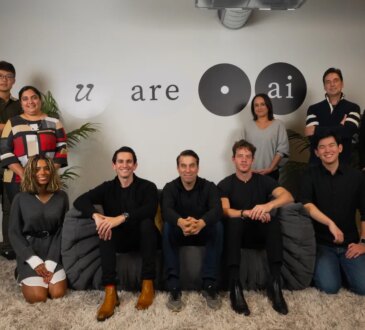“We do need to get our electricity house in order,” said Matthew Wald, former reporter for The New York Times, in a recent Zoom talk to Friends of Oak Ridge National Laboratory and others recently. He asserted that many Americans think the way to keep their electricity costs down is to install rooftop solar panels on their houses or zip tie vertically mounted solar panels to their apartment balconies.

“This is artisanal energy policy, which is my term for people who think that steps you take at home are going to solve our national energy problems,” Wald said. “It won’t do the job. We’re going to need some major new power plants.”
And those plants, he added, should house nuclear reactors.
“The nuclear industry and community have committed industrial sin,” said Wald, who works for the Breakthrough Institute, a non-governmental organization that advocates for advanced nuclear reactors. “Nuclear suffered through a long drought, and now it sees terrific demand for its product, and it’s not ready to deliver the needed electricity.”
Wald previously reported on nuclear energy and electric technologies for the Times. He now works as a writer and communications consultant specializing in nuclear technology and policy,
New companies planning to build advanced nuclear reactors, including small modular reactors, for producing power, have missed the upcoming round of construction that is being undertaken by builders of generators powered by natural gas. Wald stated that the United States lacks enough gas generators to meet predicted future power demands, as well as the capacity to build them.
Except for the Tennessee Valley Authority, he noted, many electric utilities that used to “build nuclear plants aren’t interested anymore.”
However, startups are announcing their intentions to build reactors or make nuclear fuel, including three he named (Kairos Power, Oklo and X-energy) that have bought property in Oak Ridge’s western industrial parks.
Wald mentioned a trend in which artificial intelligence companies such as Amazon, Meta and Microsoft are making power purchase agreements (PPAs) with owners or builders of nuclear power plants to ensure their future AI data centers will receive reliable power. The PPAs lower the high-tech companies’ carbon footprint and help keep the power plants in operation.
He didn’t mention that Kairos Power, which is building the Hermes series of demonstration reactors in Oak Ridge, has a PPA with Google and TVA, and that Amazon has a PPA with X-energy, which is building the TRISO-X fuel fabrication factory in Oak Ridge.
If the demand for electricity soars because of the needs of AI data centers and a growing U.S. population that continues to purchase new electronic gadgets and appliances, energy policy with respect to nuclear reactors must change, Wald implied.
One part of the new model that must change, he said, is the way that the U.S. Nuclear Regulatory Commission (NRC) works to license new advanced 30- to 300-megawatt nuclear reactors that differ from the many traditional 1,000-megawatt pressurized-water and boiling-water reactors in power plants it has approved for decades.
“Regulators must supply human intelligence to each license application, but their process must run many times faster than it does now, especially for licensing reactors that produce just 300 megawatts or 30 megawatts or 10 megawatts or 1 megawatt,” Wald said.
“These are just one-by-one individual licenses. If we’re going to think big, we’ve got to rethink regulation.”
He jokingly compared the current process of receiving a reactor license to a hypothetical driver’s frustrating experience at the Department of Motor Vehicles. The driver waits patiently for the license after taking the road test, passing the written test and then sitting for a long time – while an artist meticulously paints with oil the newly licensed driver’s portrait (no, that doesn’t happen with a real driver’s license, but you get Wald’s point).
In answer to a question on the NRC, he said the commission is working on speeding up its licensing processes because of an executive order from President Trump. He said he agrees that this is a good idea because “what the NRC does is not very productive. It has a bureaucracy that is resistant to change and that’s now dealing with new technologies.
“I am open to the idea that they’ll make errors, they’ll approve things they shouldn’t, and we’re going to learn from experience. The NRC has this habit of approving things they’ve approved before and of not approving anything nobody’s ever done before. That’s not a recipe for successful innovation and industrial progress.”
Wald talked about the need for economic production of reactors with novel designs. Achieving a nuclear renaissance, he said, will necessitate making “new products like we stamp out Boeing 737s or we used to stamp out Liberty ships.
“In serial production, if not mass production, economics must be key. We’ve got to design the better mousetrap and figure out how to build it and how to deliver it at competitive cost. Carbon reduction pledges will help in the market, but in the end, future nuclear power plants will rise or fall on the economics.”
The politics must change too, he said. Noting the not-in-my-backyard cliché, or NIMBY, as a common objection to proposals to build nuclear reactors near neighborhoods, Wald pointed out that “some of the new reactor designs will occupy literally about as much space as a backyard. Some of the designs will have plug-and-play reactor cores with the old nuclear core going back to the manufacturer every few years” to get its spent fuel replaced with fresh fuel.
He suggested a scenario in which the staff of a reactor manufacturing company’s headquarters were welcomed to a large neighborhood in a big city. Years later residents noticed a truck had just delivered an old reactor core to the headquarters!
“The other problem with artisanal energy policy is it doesn’t work as part of a system,” Wald said. “Solar and wind tribalists say their costs are going down. But we’d be much better off if we put our money into collective solutions. We should invest in the electric grid. If all the money used to purchase 11-kilowatt emergency generators, like I and others have in my neighborhood, had went into the grid instead, we’d all be better off.
“I think that solar and wind farms have their place, but only to the extent that they benefit the system. Adding solar panels in a place where noontime electricity prices on the grid are negative is not a good idea, although federal and state incentives may make that happen.”
He was asked if many more nuclear power plants were built to meet increasing demands for electricity by AI data centers, would the grid be able to handle the load?
“This is actually something in nuclear power’s favor,” he answered, noting that little high-voltage transmission is being built in the country because of successful lawsuits based on environmental rules.
“The amount of electricity transmission you need to support a new reactor is lower than what you need for wind or solar or hydro energy sources. Nuclear plants have reasonably flexible siting requirements.”
Wald may have surprised a few people in his audience by saying he’s not sure that commercial fusion power reactors envisioned for mid-century will be needed.
“I think fusion seeks to solve two problems that fission does not, in fact, have,” he said.
“One is a shortage of fuel, and the other is radioactive waste. We don’t have a shortage of uranium, and we don’t have any shortage of plutonium if we want it. The problem of radioactive waste from nuclear power plants is manageable.”
Wald had to leave the 55-minute Zoom meeting with FORNL for the 1 p.m. Zoom meeting he hosts every week with another group. But before he left, he made one statement everyone agreed with.
“Life is going to change!”






